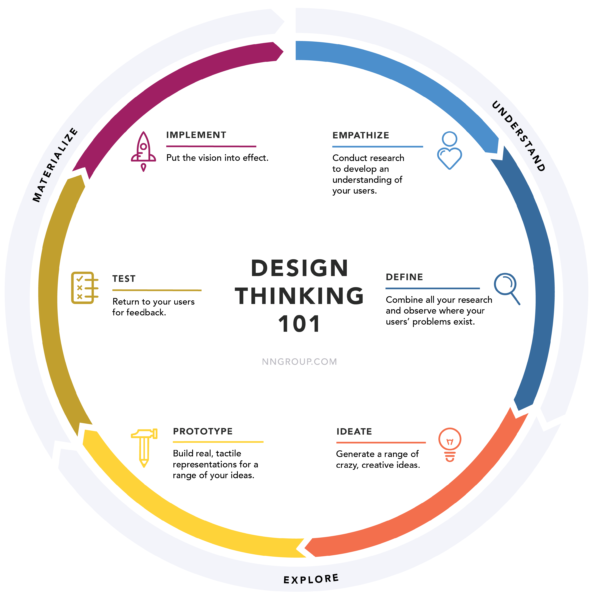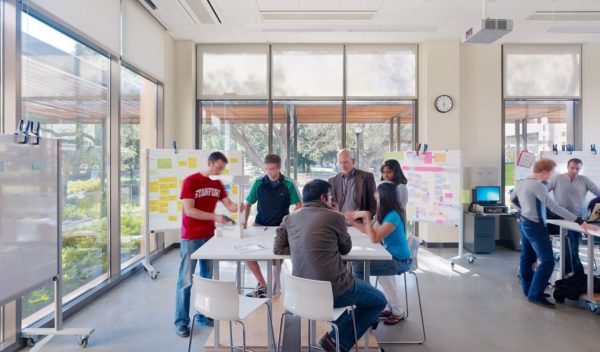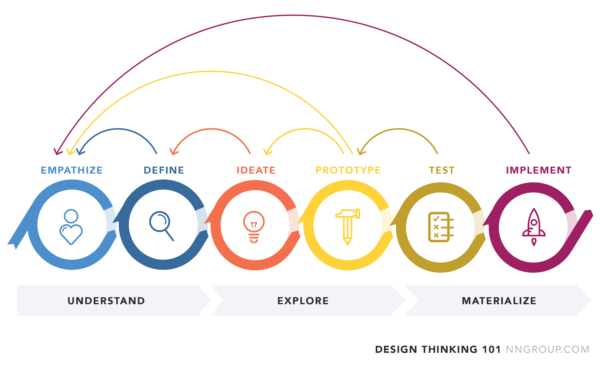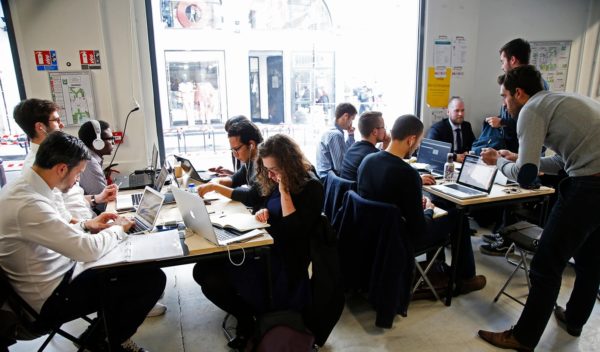“Design is the non-fiction version of art,” once said Douglas Coupland, the writer, artist and designer who has taken his hand at desk design and architecture. When it comes to design thinking, however, Stanford University may be famed for its ‘design thinking’ design school, but design thinking has made its way around the world, even to high schools across the country. What are the key principles to design thinking? And how can it improve our lives, our design work and our collaborative work? The concept of design thinking has been around for decades, like Charles and Ray Eames, whose “learning by doing” approach led them to designing a line of chairs that were far more functional than anything else of their time in the 1950s. But beyond the obvious, here are some key design thinkers on how to stay sharp.

Courtesy NNGroup
Ask better questions
The only way to get to better answers is to simply ask better questions, bot to yourself and your colleagues. Designers are problem solvers. “The better the question they ask, the better the answer can be,” said design curator Andres Tavares. “Everyone has to ask better questions.”
From IQ to WeQ thinking
“Most companies are not in a WeQ mode, they are in an IQ mode,” says Ulrich Weinberg, the director of the Hasso Plattner Institute School of Design in Potsdam, Germany. “If you look at startups, they are in a WeQ mode, they don’t call it that, but this is what companies are looking for. To use the full mental power of the people involved is key. Usually, companies don’t do that because they’re stuck in old structures and linear processes with departments fighting with each other, and large hierarchical systems. We try to help them to restructure and redefine how they do projects. This can’t be done purely in a student project, it needs training with strategic workshops with the leading executives of the companies.”

Courtesy Stanford
Focus on people
“Design thinking is a human-centered approach to innovation that draws from the designer’s toolkit to integrate the needs of people, the possibilities of technology and the requirements for project success,” says Tim Brown, president of IDEO agency. It’s not ‘us versus them’ or even ‘us on behalf of them.’ For a design thinker it has to be ‘us with them.’”

Courtesy NNGroup
Who are you designing for?
“We must design for the way people behave, not for how we would wish them to behave,” says Donald A. Norman, author of Living with Complexity. “A brilliant solution to the wrong problem can be worse than no solution at all: solve the correct problem.”

Courtesy Stanford
Build your process around possibility
Design is built on the possibility of the never-seen-before, it thinking starts with understanding, exploring and materializing a solution or concept. We know the set of six phrases that designers typically go through: empathize, define, ideate, prototype, test, and implement. However, it’s much more than just researching the audience, testing users for feedback and combining research towards a prototype.
Courtesy Stanford
Great design is a lot of work
“There’s no such thing as a creative type,” says New York illustrator and graphic designer, Milton Glaser. “As if creativity is a verb, a very time-consuming verb. It’s about taking an idea in your head, and transforming that idea into something real. And that’s always going to be a long and difficult process. If you’re doing it right, it’s going to feel like work.”
Think bigger than you did before
“Organizations previously unable to shift their way of thinking now have a guide that can be comprehended regardless of expertise, mitigating the range of design talent while increasing the probability of success,” said Sarah Gibbons, Nielsen Norman Group’s Chief Designer. “This doesn’t just apply to traditional “designery” topics such as product design, but to a variety of societal, environmental, and economical issues. Design thinking is simple enough to be practiced at a range of scopes; even tough, undefined problems that might otherwise be overwhelming. While it can be applied over time to improve small functions like search, it can also be applied to design disruptive and transformative solutions, such as restructuring the career ladder for teachers in order to retain more talent.”
Keep brainstorming
“Great ideas — those that solve a problem in a unique way — usually happen when two old ideas meet together for the first time,” says Stefanos Zenios, an information and tech professor at Stanford University. “. Great ideas are not new ideas. They are usually a combination of existing ideas. And that’s where brainstorming is powerful because it brings together people with different experiences so they can all merge their ideas together. Design thinking becomes effective because it promotes that collaborative approach. It brings people from different parts of the organization together for their different knowledge, expertise, and input on how to solve a problem. By combining those ingredients together, you can come up with new and creative ways to solve a problem.”







